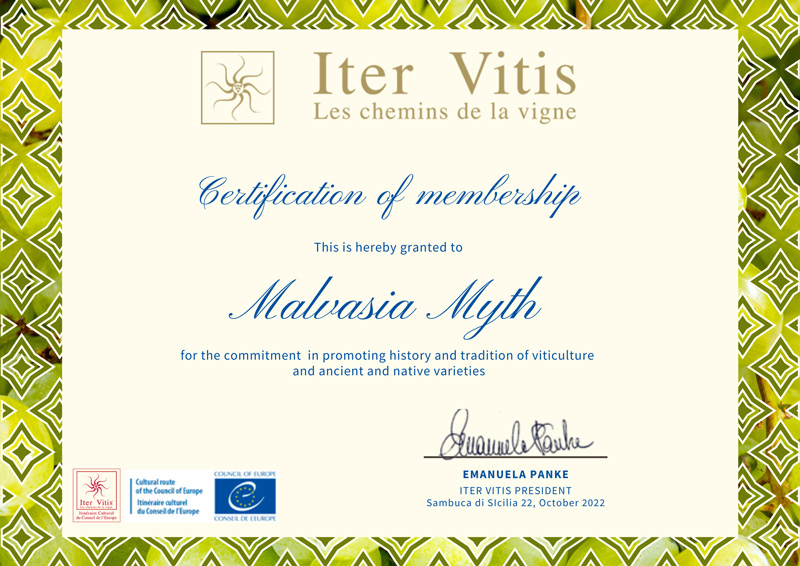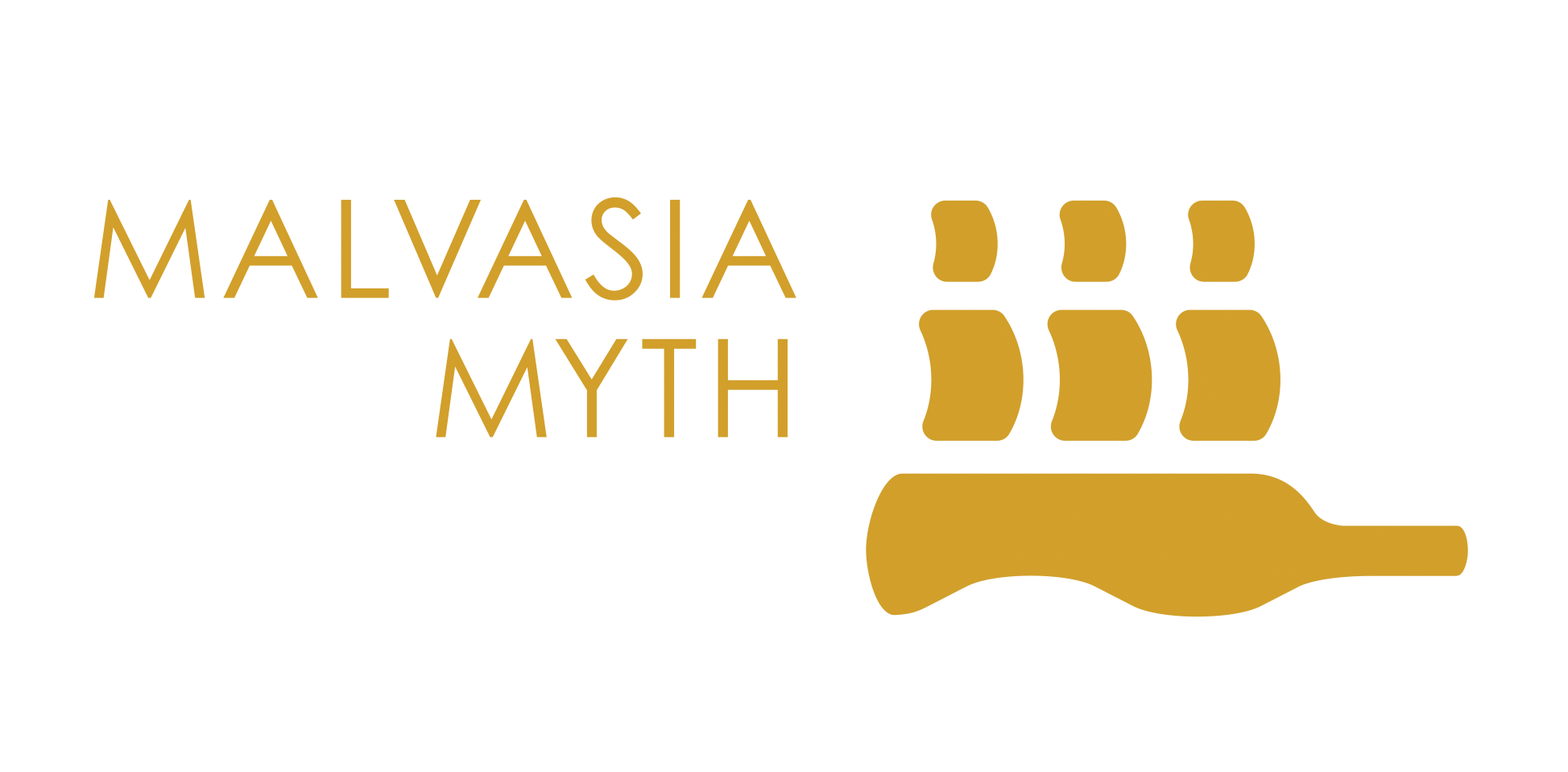The Malvasia Myth becomes part of Iter Vitis.

THE WINE AND ITS HISTORY
Malvasia wine was already famous since the 12th century, then called “Monemvasios” wine, a valuable product during the Byzantine times. It is strongly believed that it originates from the castle town of Monemvasia (Malvasia) at the foot of Mount Parnonas (Malevos) in Peloponnese, Greece. Originally (12th-15th century) the “sun-dried Malvasia” wine it was exported directly from Monemvasia, later (14th-17th century) via Crete (Candia-Malevisi), where a very similar wine – also called Malvasia – was produced and exported to Venice. Malvasia wine dominated the wine trade for six centuries, up to the 17th century, mainly to Venice and from there to the rest of Europe.
Throughout the Middle Ages, Malvasia wine became so famous and ubiquitous among Venetian merchants that they named their wine stores “Malvasie” in Venice. French traders were selling the wine as “Malvoisie” and, in England, it was known as “Malmsey”. The cultivation of Malvasia spread to other Mediterranean areas (Italy, Croatia, Slovenia, Spain, Portugal), as Venetian merchants transferred cuttings to replant Malvasia vines, while back in Monemvasia, during the Ottoman rule in Greece in the 16th century, the vineyards were abandoned, resulting in cessation of production.
The spread of cultivation led to a lot of new and different Malvasia wines that are produced today in all these countries, while new countries have been added to the list: Greece (revived cultivation), USA (California, Arizona, New Mexico), Brazil, Argentina, Australia.
All these areas have their own stories about their Malvasia wine, cultivation traditions and history. William Shakespeare, Martin Luther and Thomas Mann mention the Malvasia wine their works, Leonardo Da Vinci owned his own vineyard of Malvasia in Milan and Giuseppe Verdi was a Malvasia wine lover.
The strength of the ancient Malvasia brand may well be the first example of international wine marketing. The journey of Malvasia wine through time and place is full of mystery and charm, assumptions and proofs, history and research, tradition, experiences and taste. The story of the most famous wine in history is a true myth.
Taste the myth!
THE PROJECT
The “Malvasia Myth” project is a transnational project under the framework of LEADER/CLLD 2014-2020 programme, co-funded by the European Union. It aims at promoting and valorizing the cultural heritage of the Malvasia wine, by discovering the routes of the most famous wine in history. It builds and presents an overall myth about Malvasia’s history and culture, based on the cultural identity, the stories and legends from all Malvasia wine-producing regions and involves the local communities towards the creation of a network of Malvasia regions and the development of the cultural routes of Malvasia wine. The partners of the project are: LAG Parnonas SA (Peloponnese, Greece), GAL del Ducato (Parma and Piacenza, Italy), LAG Central Istria (Istria, Croatia).
Website: www.malvasiamyth.com
E-mail: malvasiamyth@gmail.com
Facebook: The Malvasia Myth
Instagram: @malvasiamyth
